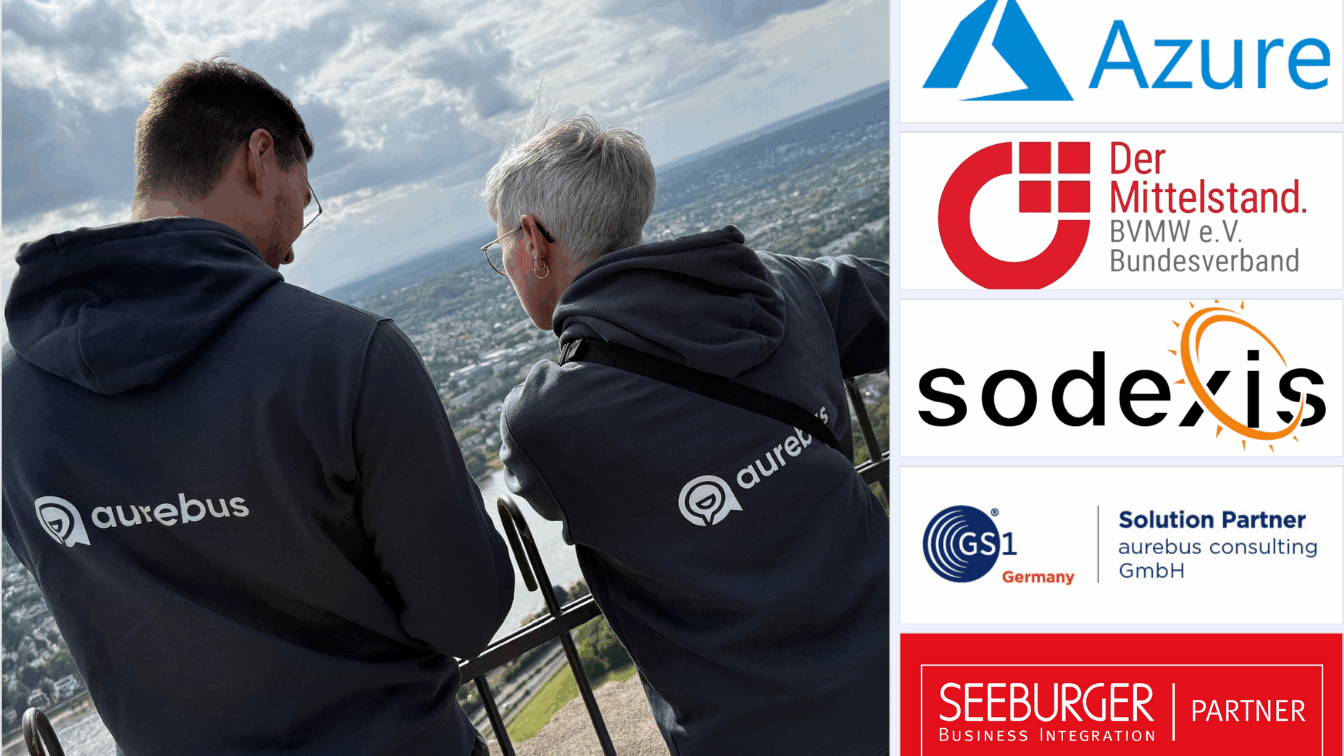EUDR-Compliant B2B Integration: A Practical Guide for Architecture and Compliance.
The EU Regulation EUDR is changing how supply chains are technically represented. Companies must provide digital proof of geolocation data, risk assessments, and due diligence statements. This article explains which architectural principles and interfaces are required to securely integrate EUDR requirements into existing B2B integrations via EDI, APIs, and GS1 standards – including practical implementation recommendations and compliance guidelines.


The EU Deforestation Regulation (EUDR) fundamentally changes how companies manage global supply chains – not only operationally but also strategically. For many industries, it marks the shift from transactional data processing to full traceability across all stages of the value chain.
Companies that import or process raw materials such as timber, soy, palm oil, cocoa, coffee, or beef must now prove that these products originate from deforestation-free areas (EU Regulation 2023/1115, EUDR). This proof is not only a compliance requirement; it is becoming a competitive differentiator.
The real challenge lies not in compliance itself, but in the technical and procedural integration of EUDR data into existing B2B and EDI infrastructures. This involves traceability, data quality, interoperability, and governance – all of which have deep implications for enterprise architectures.
In addition to classical EDI processes, EUDR requires geolocation data, parcel data, risk assessments, references to Due Diligence Statements (DDS), and a consistent chain-of-custody across all business partners. Implementing these requirements demands an end-to-end integration architecture that unites technical, organizational, and data protection aspects.
This article outlines the architectural principles, data flows, and technical standards needed to integrate EUDR requirements into existing IT and supply chain processes – helping organizations stay compliant, auditable, and digitally connected.
Why Traditional EDI Is No Longer Enough
Conventional EDI messages such as ORDERS, DESADV, and INVOIC enable structured data exchange but fall short when it comes to EUDR requirements. Companies now need to exchange:
Geolocation and parcel data identifying source areas
Risk assessments and references to DDS
Links between product batches and land parcels
Interfaces to EUDR hub systems (e.g. via the osapiens API) for automated data transfer
Support for GS1 standards such as EPCIS to ensure interoperability
The official EU Deforestation Regulation Information System (EUDR-IS) defines data submission via GeoJSON bulk upload and REST API. Since the API specifications and technical submission protocols (as of October 2025) are still evolving, any implementation must remain modular and adaptable to future changes.
Core Architecture Principles for EUDR Integration
1. Master Data Enrichment and Context Data
Extend supplier, product, and batch master data with fields for parcel reference, risk indicators, and certificates. Optionally, integrate external geodata or GIS systems.
Assign clear compliance responsibilities and log all verification and approval steps to ensure auditability.
2. Extended EDI Formats and Data Structures
Add EUDR-related fields (e.g. coordinates, DDS references, risk indicators) to existing EDI messages, or introduce supplementary JSON/XML structures.
Mappings should remain dynamically adjustable to reflect changes in EU data models or reporting formats.
3. API Connections to EUDR Hub Systems
Automate data exchange via REST APIs with EUDR platforms such as osapiens for parcel management, DDS submissions, and status queries.
Integration should follow EU documentation and sandbox environments closely to support seamless adjustments when transmission rules evolve.
4. Validation, Business Logic, and Monitoring
Before submission, data must be validated (polygon checks, thresholds, consistency).
The system must include comprehensive monitoring, automated error detection, and escalation mechanisms.
Risk assessment should be documented – covering both technical validation and organizational review, including responsibilities and decision paths.
5. Submission and Interaction with the EU Information System
Automated submission of DDS to the EU system via API, with full processing of responses and amendment requests.
Every submission must be logged, reviewed, and approved internally to meet audit and documentation requirements.
6. Auditability, Documentation, and Archiving
Versioned storage of all relevant datasets (parcels, DDS, logs) with immutable audit trails.
Provide reporting and audit features showing responsible persons, approvals, review steps, and exception handling.
7. Security and Data Protection
Geodata and parcel data must be processed in line with GDPR.
Encryption, access control, and data minimization are mandatory.
Anonymization for test and historical datasets should be standard, along with regular compliance reviews.
Example Workflow
A purchase order is flagged as EUDR-relevant in the ERP system.
An automated request is sent to the supplier to provide geodata and risk attributes.
Data is validated, enriched, and assigned to responsible compliance officers.
EDI and supplementary EUDR data packages are generated.
The DDS is submitted via API to the EU system, including internal approval and logging.
Feedback or error messages are processed automatically, triggering corrective actions if needed.
All data, including logs and historical records, is archived with version control.
Success Factors in Integration Projects
Data quality: Poor master data causes compliance risks and integration failures.
Supplier capability: Not all partners have EDI systems – hybrid or manual workflows must be supported.
Governance: Clear ownership, approval, and escalation paths are essential.
Standardization: Use of open formats (GeoJSON, JSON, XML, CSV) and GS1 compatibility.
Error handling: Exceptions and re-submissions must be systematically managed.
Scalability: Systems must handle increasing supply chain volumes.
Security and audit readiness: Every change and decision must be traceable and reviewable.
aurebus Expertise and Partner Network
aurebus leverages strong industry partnerships and integration experience in EUDR projects:
Collaboration with GS1 to align with recognized global standards
Technology partnership with SEEBURGER for robust EDI and integration solutions
Implementation of compliance and data integration frameworks for enterprise customers
Co-development of mappings, interfaces, and operating models with clients – focusing on legal, technical, and data protection aspects
Architecture Over Single Tools
EUDR shows that isolated tools are not enough. Companies need an integrated end-to-end architecture that combines EDI, APIs, validation, monitoring, governance, and submission.
This architectural foundation ensures both regulatory compliance and long-term flexibility – allowing companies to stay audit-ready while keeping their systems future-proof.
How aurebus Supports You
aurebus helps companies integrate EUDR-relevant data streams into existing B2B and EDI environments.
Our services include:
Assessment of existing EDI and system landscapes for EUDR readiness
Design and extension of mappings and data models
API integration (e.g. osapiens API)
Interface development between ERP, EDI, and compliance systems
Automation of due diligence and reporting workflows
Implementation of monitoring and error-handling mechanisms
Documentation and technical validation of compliance processes
This ensures that EUDR requirements are embedded seamlessly, automatically, and audibly into enterprise systems and supply chain processes.

We offer practical consulting with deep process understanding and strong technical implementation expertise.
